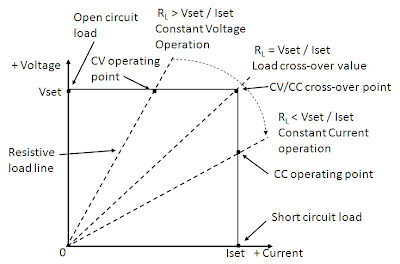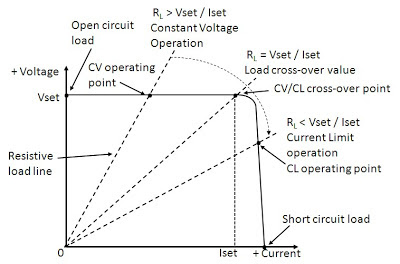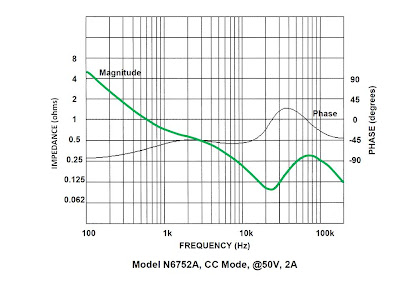In my last posting “DC power supply output impedance
characteristics”, I explained what the output impedance characteristics of a DC
power supply were like for both its constant voltage (CV) and constant current
(CC) modes of operation. I also shared an example of what power supply output
impedance is useful for. But how does one go about measuring the output
impedance of a DC power supply over frequency, if and when needed?
There are a number of different approaches that can be
taken, but these days perhaps the most practical is to use a good network
analyzer that will operate at low frequencies, ranging from 10 Hz up to 1 MHz,
or greater, depending on your needs. Even when using a network analyzer as your
starting point there are still quite a few different variations that can be
taken.
Measuring the output impedance requires injecting a
disturbance at the particular frequency the network analyzer is measuring at.
This signal is furnished by the network analyzer but virtually always needs
some amount of transformation to be useful. Measuring the output impedance of a
voltage source favors driving a current signal disturbance into the output.
Conversely, measuring the output impedance of a current source favors driving a
voltage signal disturbance into the output. The two set up examples later on
here use two different methods for injecting the disturbance.
The reference input “R” of the network analyzer is then used
to measure the current while the second input “A” or “T” is used to measure the
voltage on the output of the power supply being characterized. Thus the
relative gain being measured by the network analyzer is the impedance, based
on:
zout = vout/iout = (A
or T)/R
The output voltage and current signals need to be
compatible with the measurement inputs on the network analyzer. This means a
voltage divider probe may be needed for the voltage measurement, depending on
the voltage level, and a resistor or current probe will be needed to convert
the current into an appropriate voltage signal. A key consideration here is
appropriate scaling constants need to be factored in, based on the gain or
attenuation of the voltage and current probes being used, so that the impedance
reading is correct.
Figure 1: DC power supply output impedance measurement
with the Agilent E5061B
One example set up using the Agilent E5061B network
analyzer is shown in Figure 1, taken from page 15 of an Agilent E5061B
application note on testing DC-DC converters, referenced below. Here the
disturbance is injected in through an isolation transformer coupled across the
power supply output through a DC blocking capacitor and a 1 ohm resistor. The 1
ohm resistor is doing double duty in that it is changing the voltage
disturbance into a current disturbance and it is also providing a means for the
“R” input to measure the current. The “T” input then directly measures the DC/DC
converter’s (or power supply’s) output voltage.
A second, somewhat more elaborate, variation of this
arrangement, based on using a 4395A network analyzer (now discontinued) has
been posted by a colleague here on our Agilent Power Supply forum: “Output Impedance Measurement on Agilent
Power Supplies”. In this set up the disturbance signal from the network
analyzer is instead fed into the analog input of an Agilent N3306A electronic
load. The N3306A in turn creates the current disturbance on the output of the
DC power supply under test as well as provide any desired DC loading on the
power supply’s output. The N3306A can be used to further boost the level of
disturbance if needed. Finally, an N278xB active current probe and matching
N2779A probe amplifier are used to easily measure the current signal.
Hopefully this will get you on your way if the need for
making power supply output impedance ever arises!




